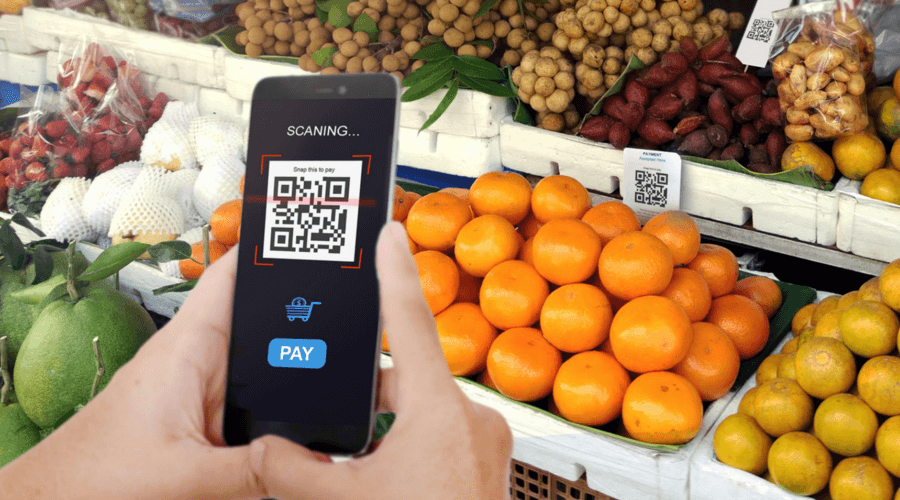This article explores how blockchain is making the food system safer, smarter, and more transparent — and why it might be the key to preventing the next major food safety crisis.
1. The Global Food Safety Challenge
Every year, contaminated food sickens millions of people worldwide. According to the World Health Organization (WHO), foodborne diseases affect 1 in 10 people annually, causing over 420,000 deaths. Despite technological advances in food production, the global food chain remains fragmented and opaque — making it difficult to trace contamination sources quickly.
When an outbreak occurs, traditional tracking methods — reliant on paper records and siloed databases — can take weeks to identify the origin. This delay costs billions in recalls, damages brand reputations, and endangers lives. Blockchain technology, however, offers a faster, more reliable solution through immutable, transparent records shared across all stakeholders.
2. What Is Blockchain and How Does It Work?
At its core, blockchain technology is a decentralized digital ledger that records transactions securely and transparently. Unlike traditional systems where one entity controls data, blockchain distributes information across multiple nodes, making it tamper-proof and verifiable by everyone in the network.
Each transaction — or “block” — is time-stamped and linked to the previous one, creating an unalterable chain of data. In the food industry, this means every step of the supply chain — from harvesting to packaging — can be digitally documented and verified in real-time. This level of transparency ensures accountability and allows consumers to know exactly what’s on their plate.
Learn more about blockchain fundamentals at IBM Blockchain Explained.
3. Blockchain and Food Safety: A Perfect Match
Food safety depends on one crucial factor: traceability. The ability to trace a product’s journey from source to shelf can make or break a company’s response to contamination. Blockchain technology enhances food traceability by providing an immutable digital record of every transaction in the supply chain.
For example, if contaminated lettuce is discovered in a supermarket, blockchain allows retailers to instantly trace it back to the specific farm, harvest batch, and even processing date — in seconds, not weeks. This rapid response reduces the scale of recalls, prevents illness, and saves companies millions in losses.
According to Forbes, companies like Walmart and Nestlé already use blockchain systems to track their food supply in real-time, ensuring integrity and safety from producer to consumer.
4. Real-World Applications: From Farm to Fork
Major corporations are already reaping the benefits of blockchain technology in food safety management. IBM Food Trust is one of the most notable initiatives — a blockchain network designed to create a transparent food ecosystem connecting farmers, suppliers, distributors, and retailers.
Walmart uses this system to trace mango shipments from farms to stores in less than 2.2 seconds, a process that previously took seven days. Similarly, Carrefour in Europe allows shoppers to scan QR codes on food packaging to access the entire journey of their product — from origin to transportation details.
This level of transparency not only boosts food safety but also enhances brand trust. Consumers can now make informed purchasing decisions based on verified data rather than marketing claims.
5. Blockchain in Action: Preventing Food Fraud
Food fraud — such as mislabeling, adulteration, or substitution — costs the global food industry over $40 billion annually, according to the Food and Agriculture Organization (FAO). Blockchain’s immutable nature helps eliminate these deceptive practices by making data tampering virtually impossible.
For instance, seafood suppliers use blockchain to certify that fish labeled as “wild-caught” genuinely comes from sustainable sources. Similarly, olive oil producers in Italy have adopted blockchain-based labeling to protect against counterfeit imports. Every link in the chain — farmer, processor, and distributor — must verify their part, ensuring honesty throughout the process.
6. Improving Efficiency and Reducing Waste
Beyond food traceability, blockchain improves operational efficiency. By replacing paper-based documentation with smart contracts, companies can automate processes like payment verification and shipment tracking. These digital contracts execute automatically once predefined conditions are met, reducing human error and delays.
Moreover, blockchain helps tackle food waste — a growing concern in global sustainability. By tracking expiry dates and supply chain bottlenecks in real time, businesses can reroute near-expiry goods to food banks or consumers before spoilage. According to World Economic Forum, better visibility through blockchain could reduce food waste by up to 20% globally.
7. Enhancing Consumer Trust Through Transparency
Consumers today demand transparency. They want to know not just where their food comes from but also how it was produced. With blockchain technology, shoppers can scan a QR code and instantly view verified details about a product’s origin, farming practices, and transport routes.
This visibility fosters loyalty and confidence, particularly for brands that prioritize ethical sourcing and sustainability. Studies by McKinsey & Company reveal that companies investing in transparent supply chains enjoy a 20–30% higher customer retention rate. Blockchain is turning transparency from a marketing slogan into measurable reality.
8. Challenges of Implementing Blockchain in the Food Industry
Despite its promise, widespread adoption of blockchain technology faces hurdles. The biggest challenge is integration — many small farmers and suppliers lack the digital infrastructure or training to participate effectively. Additionally, setting up blockchain systems requires significant investment in data management, IoT devices, and software platforms.
Interoperability is another issue. To achieve full food traceability, all parties must use compatible systems that communicate seamlessly. Initiatives like GS1 Standards aim to address this by establishing universal data protocols. As technology evolves and costs drop, more small-scale producers are expected to join blockchain-based ecosystems.
9. The Future of Blockchain in Food Safety
The future of food safety lies in smart integration — combining blockchain with other emerging technologies like AI, IoT, and machine learning. For example, IoT sensors can automatically upload temperature and humidity data from shipments onto the blockchain, ensuring conditions remain optimal during transport.
Meanwhile, AI-powered analytics can detect anomalies or contamination risks before they reach consumers. This fusion of technologies creates a self-monitoring food network that’s proactive, not reactive — preventing issues rather than merely responding to them. The result? A safer, smarter, and more sustainable food ecosystem.
Conclusion: Blockchain Is Redefining Food Trust
The rise of blockchain technology represents a turning point in global food safety and transparency. By enabling real-time food traceability, preventing fraud, and building consumer trust, blockchain is not just a tech innovation — it’s a public health solution. Companies investing early in blockchain-based systems are already reaping rewards through greater efficiency, sustainability, and credibility.
In the years ahead, blockchain will become an integral part of the food supply chain, ensuring that what we eat is safe, authentic, and responsibly sourced. For more insights on digital transformation in the food industry, visit FoodTech Insights (example.com) and Blockchain Business Hub (example.com).




